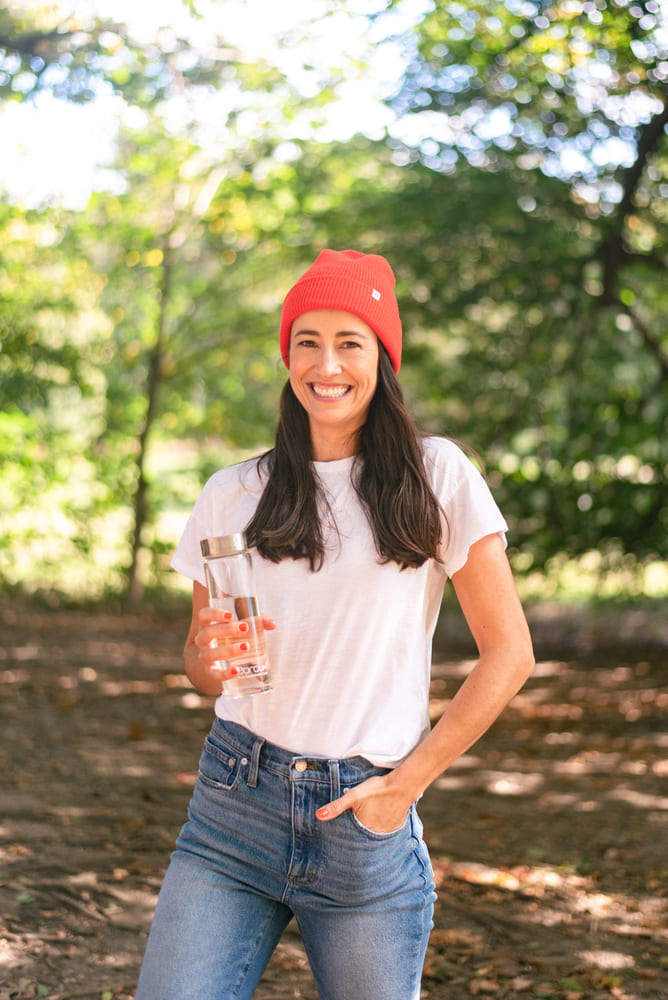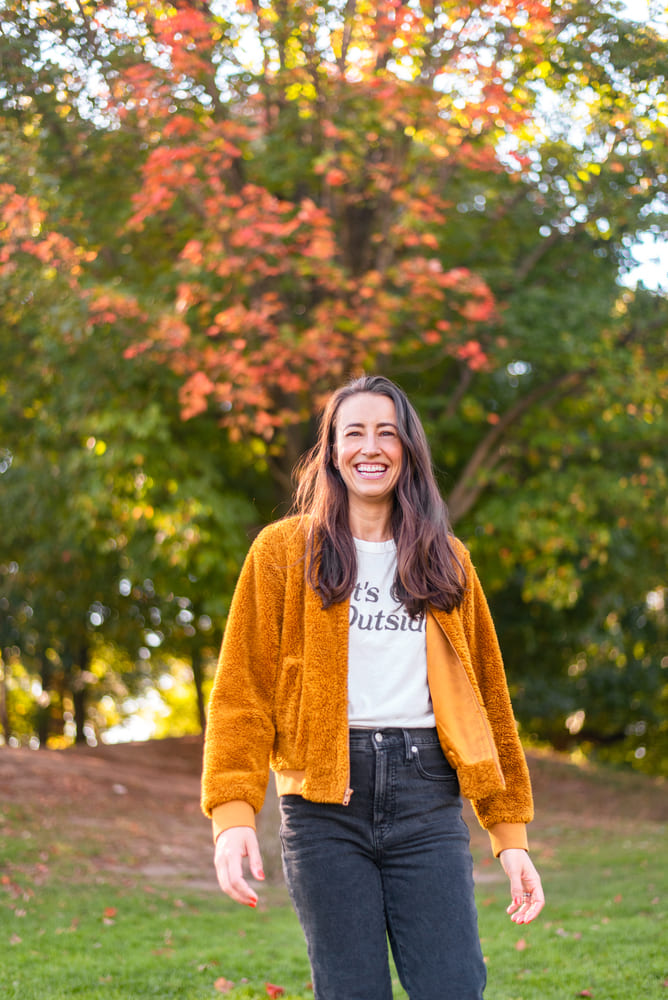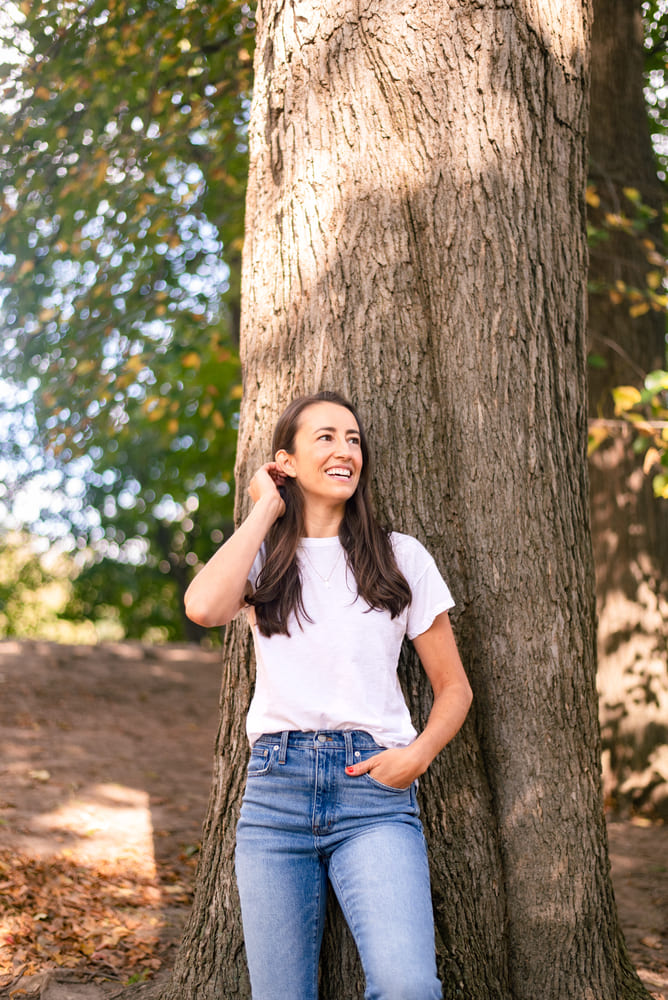January 19, 2022
How to Live in Alignment With Your Body: Meet Registered Dietitian and Integrative Nutritionist, Anna Brown
By Emily Merrell
It’s not about sticking 100% to your diet – showing up with consistency is the key to health, says Anna Brown. She’s a New York City based registered dietitian and her teachings encapsulate a holistic approach. Anna advises her clients on their sleep regimen, hormonal cycles and so much more. Read on to learn her advice on implementing purposeful routines and connecting more to your body.

SDS: You’re a registered dietitian and integrative nutritionist — I’m sure you’re asked a million questions by people who sit down next to you on planes, trains, etc. What is your most commonly asked question that you love answering?
ANNA BROWN: Stump the dietitian is my favorite game! My family has fun playing it at holiday dinners. Because nutrition is so personalized and everyone always has a different health challenge, my most commonly asked question is usually not nutrition related. It’s “What’s the difference between a nutritionist and a registered dietitian? Or a health coach and a registered dietitian?”
All registered dietitians are nutritionists, but not all nutritionists and health coaches are dietitians. A nutritionist is not a protected title in the US, so anyone can call themselves a nutritionist. You could go read a book on nutrition and then call yourself a nutritionist.
A registered dietitian on the other hand, is a credentialed and protected title. To become a registered dietitian (RD), you have to complete prerequisite classes (think biochemistry and food science), a Master’s degree, a supervised 1200 hour internship in the hospital, and then sit and pass the boards exam. RD’s also have to complete continuing education every five years to maintain the credential.
Moral of this story is to always know the credentials, education, and experience of the nutritionist you’re working with!
SDS: What is your “why” for becoming a dietitian and integrative nutritionist?
AB: I truly believe the world needs more people showing up and living in alignment with their purpose and their dreams. In order to get there, we have to feel physically vibrant and healthy first.
Unfortunately, clients come to me every day feeling disconnected from their body and lacking the energy, focus, and clarity to show up, accomplish their goals, and live the life they want.
They feel like they’re doing everything “right” – drinking the celery juice, hitting the Peloton, meditating, taking supplements – but it’s just not working.
The key to feeling vibrant and healthy isn’t a quick fix on Instagram or a trendy new wellness gadget. The key is slowing down, tuning in, and actually doing LESS so that you can reconnect with nature and your wildness within.
By doing that, we can wake up feeling GOOD every day, which makes it easier to live happy, kind, joyful, and purposeful lives.

SDS: We live in a very busy and buzzy world. What are the best first steps to refocus your body and health?
AB: So true! The world has changed drastically over the last 200 years and its effects are manifesting in anxiety, depression, sleep disorders, and lost productivity. The average adult is now on some form of device for 10 hours and 39 minutes a day. We pick up our phones an average of 252 times a day, that’s every 5.5 minutes. Our attention span is down to 8 seconds and we sleep an hour less every night than adults did in 1950!
I’m here to tell you there’s hope.
To overcome these mental, physical, and emotional health effects, it’s important to slow down and reconnect with nature, in every aspect of your life. This doesn’t mean you have to go camping or live in the woods to reap all of the amazing benefits that nature has to offer. Your wild is already within you. Coded into your very DNA.
I live in Brooklyn and reconnect with nature every day by living in sync with my biological rhythms, eating wholesome seasonal food from the ground and not a box, and even diffusing hinoki cypress oil to lower stress and cortisol. Yes, I nerd out on the research and share it all with my clients in digestible nuggets.
The best first step is to live WITH your biological rhythms instead of fighting them. This means staying in sync with your circadian rhythm by going to bed and waking up around the same time every day, getting at least 10 minutes of bright light first thing when you wake up, drinking water for an hour in the morning before having caffeine, and turning off screens and devices an hour before bed so your body can properly produce melatonin.
This is how you harness your natural superpower that unlocks so much energy and vibrancy in your life.
Once you’ve synced your circadian rhythm, you can explore cycle syncing (if you’re menstruating and not on hormonal birth control) to reap the benefits of your feminine advantage. Women have two biological clocks whereas men have only one and it’s time we reclaim this advantage for improved intuition, creativity, and productivity.
Lastly, I always recommend aligning your diet and lifestyle practices with the seasons. Eating seasonal fruits and vegetables from a local farmers market is the easiest way to do this. The trees shed their leaves and animals hibernate or migrate in the winter, so why shouldn’t we change our habits? We are mammals after all!
SDS: As a new mom yourself, what was the biggest surprise to your body/life that you had to relearn and calibrate?
AB: My biggest surprise is that my time wasn’t my own anymore. It’s an incredibly big shift to go from an independent person who can do whatever she wants, whenever she wants, to suddenly being depending on another person’s schedule and needs. It can feel a little claustrophobic at times and I’ve had to go through a very transformative mourning process to let go of the Anna I was before I had my daughter in order to embrace and thrive in my new role.
All that being said, I wouldn’t take any of it back. She is the best thing that’s happened to me and I’m so grateful she chose me as her mother. She motivates me to wake up every day and do what I can to make the world a better place for her.
I’ve practiced what I preach and learned how to accomplish more while doing less by simply ReWilding and syncing with my natural rhythms.

SDS: Meal planning and eating “clean” is hard. Beyond fad juice cleanses and smoothies, what are your favorite and relatively easy go-to meals and items to keep in your house?
AB: Meal planning can be hard and eating clean can be an unrealistic expectation, which is why I always recommend meal prepping and giving yourself grace! No one, not even Registered Dietitians, eat perfectly 100% of the time.
Every Sunday I like to spend an hour roasting some vegetables, cooking a protein or two, cooking a batch of whole grains, and prepping a few jars of overnight oats. Then during the week, it’s easy to throw together a meal just by reheating or tossing it all into a salad. My go-to meals usually look something like this or this.
These are my favorite foods to prep on repeat: protein (salmon, chicken, quinoa, or legumes), whole grains (oats, quinoa, farro/barley, wild rice), dried or canned legumes and lentils (black beans, chickpeas), seasonal vegetables cooked and prepared based on the season (cooked in the fall and winter, raw in the spring and summer), and some fresh fruit and avocados.
SDS: What’s coming up next for you and how can our readers learn more about your offerings?
AB: I’ll be launching the second round of my group coaching program, ReWild Reset at the end of January! You can read more about it here.
I also am taking a few more 1:1 clients in my 3-month Nutrition in Tune program starting in 2022. You can sign up for a free discovery call and check out my other services through the link in my Instagram bio or on my website.
I look forward to connecting, supporting, and ReWilding with all of you!

